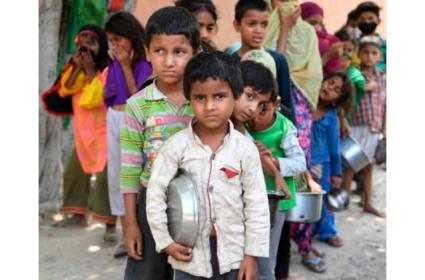Targeted Interventions – A Means To Alleviate Poverty, Accelerate Sustainable Development

By Dr. Aatish Parashar, Dean and Head, Central University of South Bihar
India is expected to surpass China and become the world's most populous country sometime next year, four years ahead of an earlier estimate by the United Nations. Additionally, our country is going to be one of eight centers of population growth till 2050. Alarming as they are, these findings highlight the need for us to look ever more urgently for solutions that catalyze sustainable development.
A whopping 400 million Indians still live in poverty, and we have the second largest number of extremely poor people globally, second only to Nigeria. Our task is cut out. We must uplift a sizeable chunk of our population quickly to be able to actualize our dream of seeing a poverty-free India within our lifetime. Despite so many people living in poverty in India, we are not a poor country. With the resources we have now, we can afford to dream of a poverty free India before we celebrate 100 years of independence.
What is needed is a set of meticulously designed and rapidly scalable interventions that address the very root causes of poverty. These could be across the domains of skill development, education, ensuring availability of basic infrastructure, and healthcare through effective disease prevention and control. Implemented with rigor, quality interventions across these areas could make a profound difference and propel India on a trajectory of fast-paced sustainable development and human progress.
To be sure, Indian policymakers have launched some ambitious programs geared at widening access to quality education and healthcare. Compassionate policymaking has spurred the progress of the tribal population in Madhya Pradesh. The state has the largest tribal population in the country and over the past few years, the metrics of tribal well-being in Madhya Pradesh have improved — across health, education, access to resources like land and water, and employment opportunities.
The state administration has been sensitive to the needs of the tribal population. Madhya Pradesh's budget for tribal welfare in financial year 2020-21 was INR 8,085.99 crore, 10 times more than the budgetary provision made in 2003-04. The state administration has overseen the implementation of schemes like the Mukhyamantri Awas Sahayata Yojana, the Kanya Saksharta Protsaahan Yojana, and the Vimukt Jati Hostel Yojana to provide tribal students housing, food, and scholarships and ensure they learn, upskill, and become ‘atmanirbhar’ (self-reliant). Civil society organizations are also chipping in with skills training for the underprivileged as they realize its potential in pulling people out of poverty. I have witnessed firsthand, the skill initiatives of one such pan-India organization – Smile Foundation. Through its Smile Twin e-learning Program, this NGO has trained 47,000 youth so far in digital fluency, language skills, critical thinking, problem-solving and self-learning, and placed 28,000 students in 200 brands through its 95 operational projects across India. The Foundation also runs Project Manzil, an employability training program which has trained over 14,000 underprivileged girls and enabled on-the-job training for another 5,000 girls.
Technology promises answers
Technological innovation will be the game changer. It removes barriers to access and enables quick widespread adoption as evidenced beautifully in financial inclusion through Unified Payments Interface (UPI), and the Jan Dhan, Aadhar and Mobile (JAM) trinity.
India possesses an enviable digital data stack in healthcare, education. Innovation built on these stacks can help drive population-scale adoption and improve health and education parameters pan India.
In the area of disease prevention and control, organizations like Malaria No More are fueling the fight to end malaria in India by ensuring we continue to prioritize the goal of malaria elimination by 2030. Increased private sector participation that drives continuous technological innovation in tracking and reporting malaria cases will be key.
Enabling widespread access to basic infrastructure like potable water will be foundational to India's progress. The Jal Jeevan Mission, aimed at providing drinking water through individual household tap connections by 2024 to all households in rural India, has transformational potential. Around 51% of rural households currently have tap water connections, up from 17% in August 2019. Burhanpur district in Madhya Pradesh is, in fact the first 'Har Ghar Jal' certified district in the country. Connectivity to potable water is revolutionary in that it has helped arrest school drop-out rates among girls in rural India. It has reduced drudgery and dramatically improved the ease of living of adolescent girls, women, and the elderly.
While India lags on the achievement of Sustainable Development Goals (UN-SDGs), our country is still much ahead of any country in terms of performance on the 2030 targets. The journey to sustainable development and improvement across key indicators in health, education, poverty reduction, and welfare is one that India will have to take faster still. For this, we will need all key stakeholders – governments, corporates, and civil society organizations – to work in deeper cooperation with one another to devise and implement targeted and rapidly scalable interventions across these sectors.

















